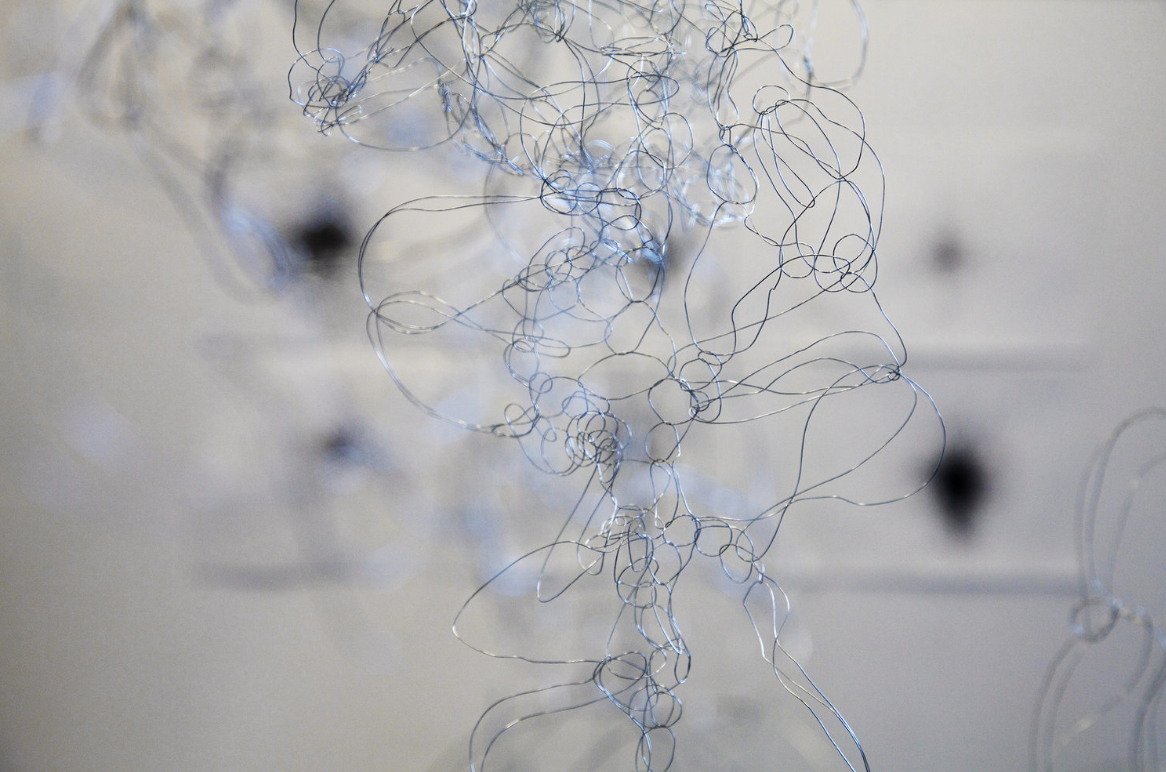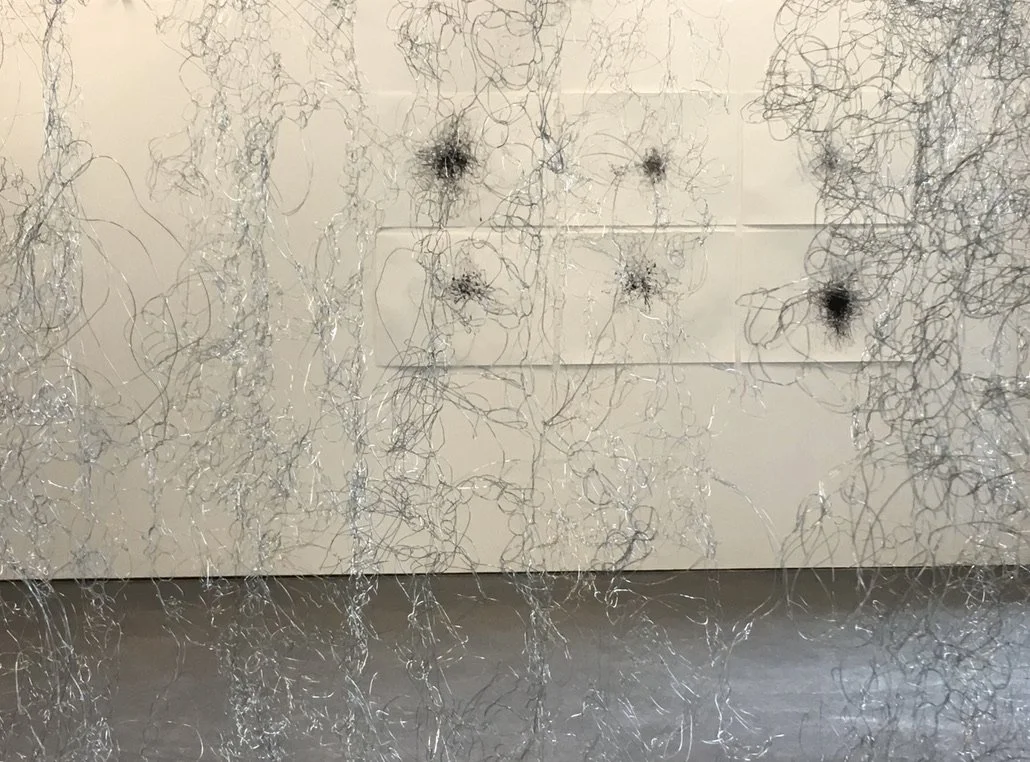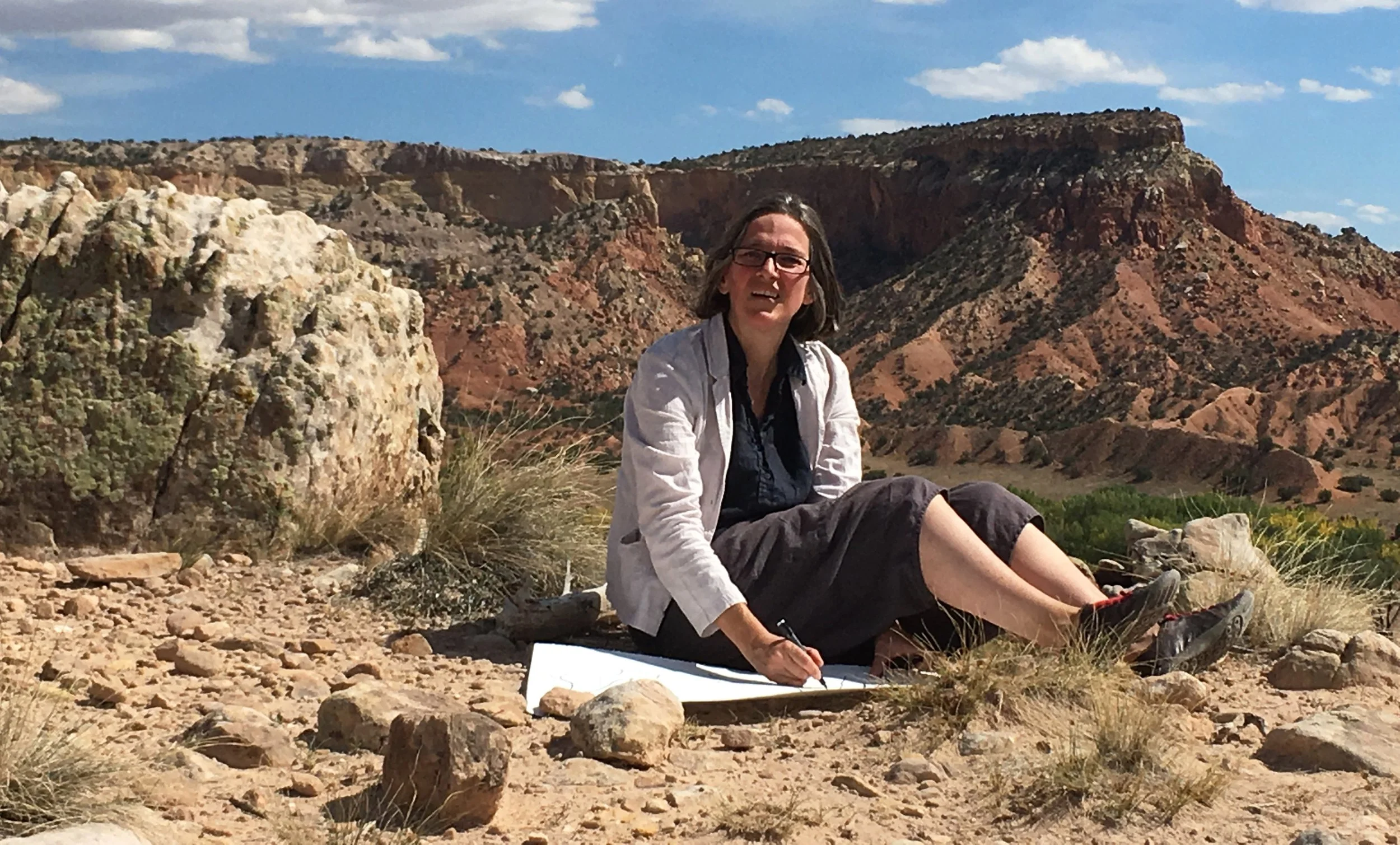Folding posthuman feminism into practice
Displacement Activity/No Control (2018) – Lynda Beckett
During my MA (Central Saint Martins, UAL 2016-18), I wove life, geology, and technology into my practice. Displacement Activity/No Control[1] was a mass of threads and knots that developed from drawings and crocheted wire strands manifesting as an installation of knotworks. I did not want to control the materials. I knotted wire without following any formal pattern and set up a rig in the back of a moving vehicle to create the drawings. I now see this installation as a zoe/geo/techno assemblage (Braidotto, 2022) dissolving power structures and decentralising human control.
Displacement Activity/No Control (2018) – Lynda Beckett
During The Posthuman Life of Methods course at Utrecht University 2022[2], I recognised I could contribute as an artist to posthuman feminist knowledge through my knot making practice by developing the concept of the knot as a method and methodology. Throughout the course, scholars from the humanities, sciences and technology fields, highlighted and discussed climate change, environmental exploitation, and the rights of indigenous peoples. Throughout the course the ideas were disseminated as single strands of thought, rarely as transversal knotted thoughts. What might happen if the strands were folded together? What if the material were put under tension, then folded and knotted into different forms, how would this process change posthuman scholarly knowledge and practice?
As I consider the entanglement of Braidotti’s zoe/geo/techno assemblage within my practice, I realise I am forming what might theoretically be viewed as a knot, using the skills I have developed as a maker. Now I think about the knot as a conceptual tool and a method of making that evokes the sensual. Particularly when I am situated within a geological environment, thinking through making develops my understanding and a connection with my surroundings. The process of making demands a performance of actions embedded within the environment and felt within the space, where matter is equal.
(Photograph courtesy of Valerie Sewell, 2018)
Making is an intra-action (Barad, 2007, pp. 175-176) of materials, seen and unseen. Intra-action, for Barad, is the cause and effect that emerges from the interplay and connectedness of different entities within a space. This intra-action is paralleled within my knot-making process. However, from a posthuman feminist stance, there is also affect. This sensual relationship between materials allows the unrealised or virtual potential to flow across and through multiple planes.
Pulling threads from Braidotti’s posthuman feminism
Braidotti informs my interdisciplinary art practice through her concept of posthuman feminism (2022, pp.5-6), where human and non-human materials entangle with the environmental, geological, and socio-political to form a complex assemblage without hierarchical structures. With all materials on an even par, the subjective ‘I’ moves towards the transforming ‘we’ (Braidotti, 2022, p. 8). The ‘we’ is multifaceted and cuts across the planes of the sciences, technology and the humanities.
Pulling threads from Spinoza, Deleuze and Guattari, Braidotti’s philosophical thinking breaks dualistic, hierarchical, and patriarchal structures and dissolves the stance of ‘man as the allegedly universal measure of all things' (2019, p. 32). Braidotti’s research (2022), and my own, cannot escape postcolonial thinking, i.e., the perspective of the white, educated European male. This perspective must be questioned. To unravel the postcolonial views of Deleuze and Guattari, Braidotti (2022, p. 120) draws on contemporary philosophers Simone Bignall and Paul Patton (2010), who in turn draw on Caren Kaplan (1996)[3]. From Kaplan’s work, it could be argued that Deleuze and Guattari use the ‘I’ of the ‘observer’ rather than being situated within the observed to gain knowledge. They take the dualist subject/object stance. This means the object is not allowed ‘to speak for itself’ (Kaplan, 1996, p. 88), and this ‘perpetuates colonial discourse’ (ibid., p. 88). It could be argued that Kaplan’s observation of the privileged white male speaking on behalf of ‘the other’ remains relevant today within European scholarship. A dilemma is how to form a platform that enables the othered to speak for themselves.
[1] Displacement Activity / No Control (Beckett, 2018) - https://www.lyndabeckett.org/#/gipfel/
[2] Attending this course enabled me to interact globally with PhD students and theorists who considered the world as a zoe/geo/techno assemblage, as we responded to humanitarian, environmental and technological issues. A small percentage of the attendees were artists, yet every afternoon, we were challenged to think differently by responding to the morning sessions via art practice. It was positive to see a leading philosophical thinker acknowledging art practice as a method of revealing the new.
[3] This folding of thoughts parallels the folding within my making practice to develop new thoughts and artworks.


